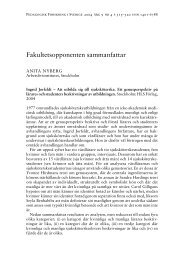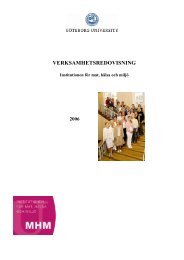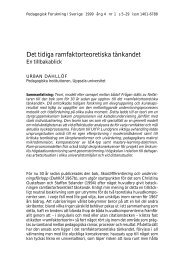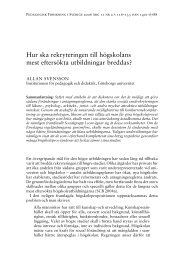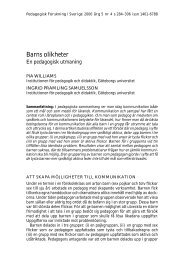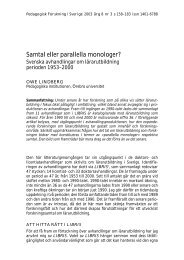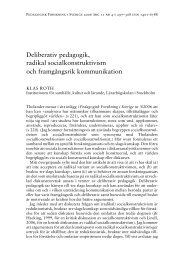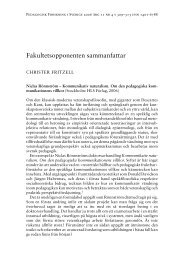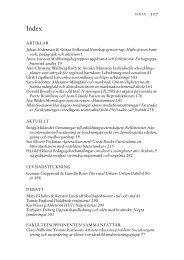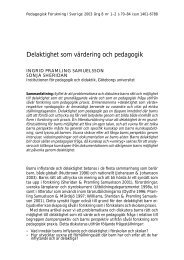University of Oslo Workshops June 29-30 Conference July 1-3 ...
University of Oslo Workshops June 29-30 Conference July 1-3 ...
University of Oslo Workshops June 29-30 Conference July 1-3 ...
You also want an ePaper? Increase the reach of your titles
YUMPU automatically turns print PDFs into web optimized ePapers that Google loves.
in Latvia’s primary education (fourth grade). Data from two IEA studies, PIRLS 2006 and<br />
TIMSS 2007, were used. Even though Latvia’s overall results in the international arena at<br />
the primary school level have always looked rather good (Latvia scored well above the<br />
international average in reading literacy, mathematics, and science), how these scores are<br />
distributed across the population is very important. Intraclass correlations and variance<br />
components alone provide little more than an indication <strong>of</strong> equity, or in this instance<br />
inequity, in student achievement, and further analyses <strong>of</strong> contextual information is<br />
necessary to explain these results. Socio-economic status was the most important<br />
determinant <strong>of</strong> student achievement, but socio-economic backgrounds <strong>of</strong> individual<br />
students could not fully explain the urbanization effect. Low achievement equity in<br />
education proves to be a problem <strong>of</strong> segregation by socio-economic status, and the<br />
urbanization effect is significant mostly because the segregation was more obvious in the<br />
rural areas <strong>of</strong> Latvia. Almost half <strong>of</strong> the originally stated urbanization effect was explained<br />
by controlling for the proportions <strong>of</strong> disadvantaged students in different schools.<br />
Keywords: equity in education; achievement gap by urbanization; socioeconomic<br />
background; community composition effects<br />
<br />
Exploring the Measurement Pr<strong>of</strong>iles <strong>of</strong> Socioeconomic Background and their<br />
differences in Reading Achievement: A Two-level Latent Class Analysis<br />
Kajsa Yang Hansen, <strong>University</strong> <strong>of</strong> Gothenburg, Sweden<br />
Ingrid Munck, <strong>University</strong> <strong>of</strong> Gothenburg, Sweden<br />
Appling two-level latent class analysis technique, the proposed study is to explore the<br />
psychometric pr<strong>of</strong>iles <strong>of</strong> SES and to examine the reading achievement differences<br />
according to the latent pr<strong>of</strong>ile belongingness. Unlike the previous view <strong>of</strong> SES simply<br />
being an observed index <strong>of</strong> all its indicators or as being a latent continuous construct, this<br />
measurement approach conceptualizes SES by forming distinct categories or typologies <strong>of</strong><br />
it. The latent class approach takes into consideration the measurement error in the response<br />
patterns <strong>of</strong> the SES indicators, and bases the categorizations on the prior and posterior<br />
probability distributions under the conditioned maximum likelihood estimation. This<br />
analysis will firstly be applied to Swedish PIRLS 2006 data and the empirical findings will<br />
be verified by Norwegian data. SES indicators <strong>of</strong> individuals are from Student and Home<br />
Questionnaires in PIRLS 2006 and the school SES composition is measured, in addition to<br />
the individual level SES indicators, by variables from School Questionnaire.<br />
Keywords: SES; PIRLS; latent class analysis; school composition; reading achievement<br />
78



